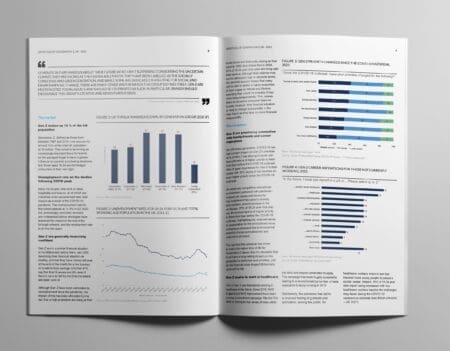One in five US women use a cleansing brush skincare device
The skincare device market is primed for growth, as women are motivated by convenience and the promise of professional results. Deep cleansing continues to be a prominent feature of the category, with sonic cleansing brushes generating the highest usage among listed devices in the US (20%), according to a new report from Mintel. US women are most likely to associate cleansing (44 percent) and exfoliating (55 percent) benefits with skincare devices, as opposed to topical skincare products. Nonetheless, the category faces challenges including increasing usage and promoting product trials. While innovation around lower-priced items continues, many devices remain out of reach for the average female consumer. Looking forward, technology, such as wearable devices and apps, and products with increased benefit claims will likely drive innovation.
Face of the skincare device consumer
Current users of skincare devices skew young, particularly for cleansing brushes which are most popular among US women age 18-24 due to several factors including skin needs (ie oily, more acne prone) and a general tendency to be more engaged in the beauty category. As may be expected, household income is a significant category driver, with those in the $75K+ groups reporting above average usage of skincare devices. More encouraging for the industry is that skincare devices have a broader audience among women who are interested in trying out new products, suggesting that the device market has room to grow. Women aged 18-54 report similar levels of interest for most devices, though interest does skew significantly younger for skin massagers and airbrush makeup applicators. Across the board women agree that price remains a significant barrier when it comes to purchasing a skincare device. While innovation continues around lower-priced devices, many are still priced higher than the optimal price range for women (around $50), according to Mintel data.36% of US women cite trying a product out and liking the results as a top reason for purchasing beauty care devices
Usage is low, but interest is strong
Incidence of skincare devices is low, with only a small percentage of women reporting usage across devices. For example, six percent of women have used a laser device and only four percent have used an airbrush makeup applicator in the last year. Cleansing brushes generate the highest usage rates with 13 percent of US women stating they have used a sonic cleansing brush in the last year. Usage is likely driven by a more prominent presence in the marketplace when compared to other devices. While trial is low, interest in skincare devices is strong. Consistent with higher usage and awareness, both sonic (34 percent) and rotating (33 percent) cleansing brushes generate some of the highest levels of interest. Interestingly, despite very low usage, skin massagers produce the strongest interest among women with 36 percent.
“The skincare device market is relatively new, and while growing, faces some challenges including a high proportion of women that express little interest in trying devices and lapsed users. A combination of low awareness and high price tags is likely driving this lack of interest,” said Shannon Romanowski, Senior Beauty & Personal Care Analyst at Mintel. “A small percentage of users report using skincare beauty devices longer than 12 months ago. Reasons for discontinued use could be that women didn’t see enough of a benefit from these products. This showcases the need for communicating the long-term skincare benefits of the device.”
Motivated by results, recommendations and reviews
Outside of replacement (49 percent), cleansing brush users are motivated to purchase new devices by a variety of factors including special offers (28 percent), reviews (28 percent) and family/friend recommendations (26 percent). When asked what the top reasons for purchasing a beauty care device, 36 percent of US women referenced trying a product out and liking the results, while 30 percent were impressed with product results on someone they know. “Many of the cited purchase influencers revolve around seeking more information, including reviews and recommendations, which is driven by the relative newness of the skincare device category, combined with high price points,” said Romanowski.
While women are seeking information from a variety of sources, the in-store experience also remains important. Regardless of product type, skincare device shoppers are most likely to cite mass merchandisers as their top destination for beauty devices (55 percent). The accessibility, affordability and convenience associated with mass merchandisers make them a popular choice for US consumers. Online retailers are also a popular choice for 35 percent of beauty product shoppers, while 13 percent prefer to browse beauty products online and buy in-store, according to Mintel data.
Innovation in the form of wearables
The next evolution in skincare devices are coming in the form of technology and products that promise new benefits. According to Mintel Trend Second Skin, wearable technology is going beyond allowing consumers to be hands-free, it’s helping people to monitor their health, and even maintain their appearance. As the market grows and usage increases, consumers will seek out products that offer greater benefits. “We’re seeing innovation in the category in two specific areas: tech and benefits claims. The latest innovations in skincare devices include mobile apps, smart devices and wearable technology, including cleansing brushes with a microchip that adjusts speed and cleansing time based on the user’s skin needs and an iPhone-connected device that uses transdermal skin imaging to develop a customized skincare routine,” Romanowski continued. “For consumers looking to target specific skincare needs, innovation comes in the form of benefit claims like wrinkle reduction or hair removal. As the category evolves, we’ll continue to see innovation in products that target specific consumer needs.”
Press review copies of the Beauty Devices – US 2015 report and Beauty Retailing – US 2015 report, as well as interviews with Shannon Romanowski, Senior Beauty & Personal Care Analyst, are available on request from the press office.
For the latest in consumer and industry news, top trends and market perspectives, stay tuned to Mintel News featuring commentary from Mintel’s team of global category analysts.
-
Mintel StoreGet smart fast with our exclusive market research reports, delivering the latest data, innovation, trends and strategic recommendations....View reports
-
Mintel LeapMintel Leap is a revolutionary new AI-powered platform that will transform your research process....Book a demo







































